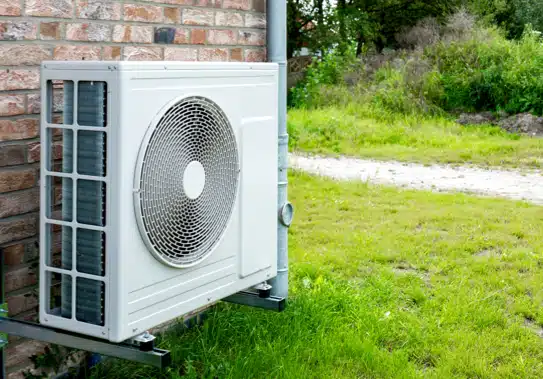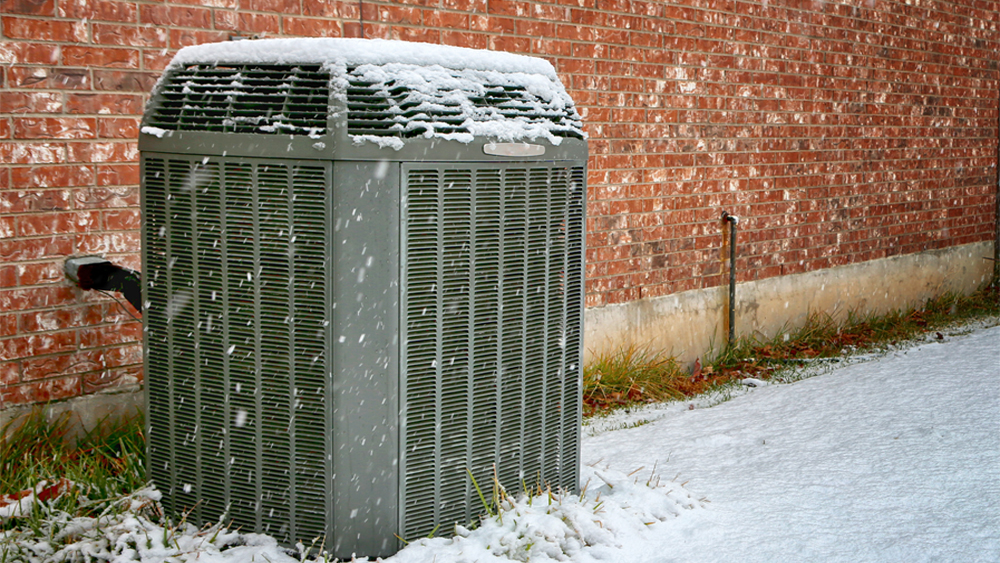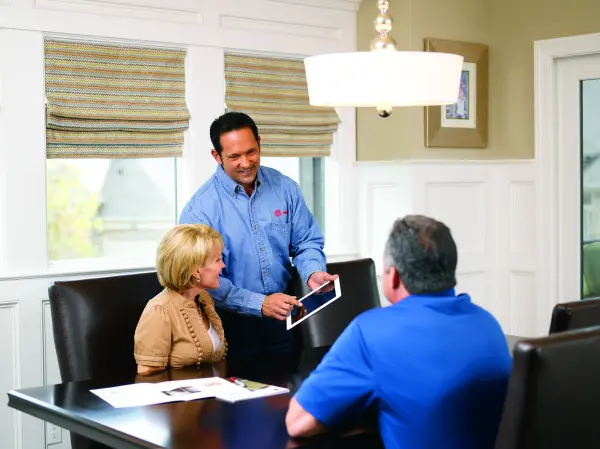A heat pump is a device that sits outside your home and transfers heat from one place to another, rather than generating heat like a furnace or boiler. It can both heat and cool your home, depending on the season. When it's cooling, the heat pump takes heat out of your home's inside air and releases that heat outdoors. When it's heating, the heat pump does exactly the opposite—it takes heat from outside and transfers that heat into your home's air.
IN THE SUMMER, A HEAT PUMP COOLS YOUR HOME
A heat pump is essentially an air conditioner with a reversing valve that automatically switches between heating and cooling modes.
In the summer, the heat pump extracts heat from the outdoor air and transfers it into your home.

IN THE WINTER, A HEAT PUMP HEATS YOUR HOME
In the winter, the heat pump switches its function to pull heat from the outside air and bring it into your home.
If you have an all-electric system, the heat pump can be assisted by heat strips inside the furnace. These heat strips work like the coils in a toaster – they heat up when electricity flows through them, warming the air around them.
The warm air is then pushed through your home's ductwork by the furnace, while cool air is pulled in to be heated up again.


HEAT PUMPS WITH A FURNACE
Which one does the most work? Well, the thermostat controls everything. It lets the heat pump work as long as possible, but when the pump needs to defrost in cold weather, it switches to the furnace's heat strips.The blower motor circulates air, whether it's from the heat pump, coils, or heat strips, and the thermostat decides which one does the most work.
If you have an all-electric system, the heat pump can be assisted by heat strips inside the furnace. These heat strips work like the coils in a toaster – they heat up when electricity flows through them, warming the air around them.

BENEFITS OF HEAT PUMPS
- They provide both heating and cooling.
- They are highly energy-efficient because they transfer heat rather than generate it.
- They use less energy to heat or cool your home so they can lead to significant savings on utility bills.
- They produce fewer greenhouse gas emissions than traditionsl heating sysems like gas or oil furnaces.
- They typically last longer than traiditonal heating systems if you give them the proper maintenance.

